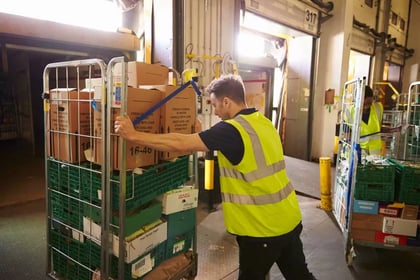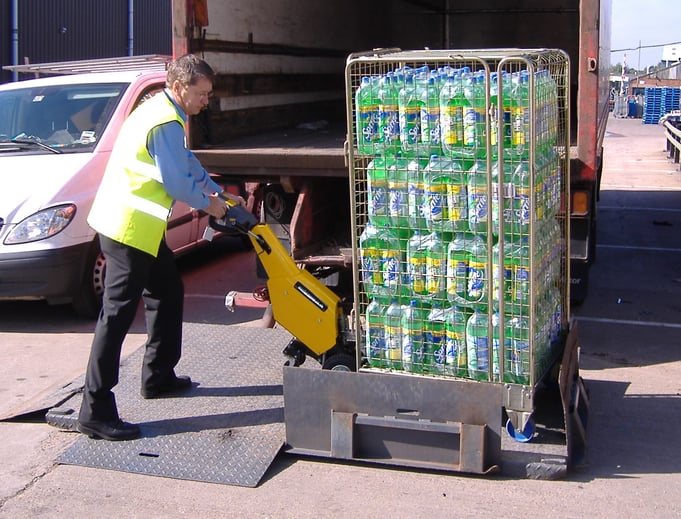How To Move Supermarket Roll Cages Safely
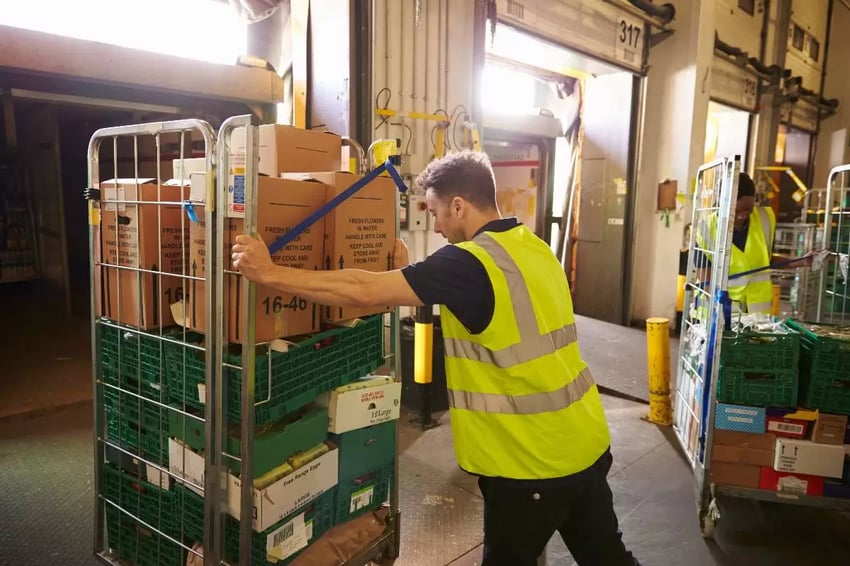
Roll cages, also known as wheeled cages, warehouse cages, roll containers or retail cages – are used extensively in retail and warehousing operations.
Individual goods, stock and products are loaded into roll cages and then transported from distribution centers and depots to their final destination, the supermarket.
How are roll cages moved?
Traditionally, individual cages are moved manually. Expecting staff to manually push or pull cages, often weighing up to 1,100 lbs., presents several safety challenges, which many businesses are looking to overcome with our Roll Cage Movers.
How are roll containers used in retail deliveries?
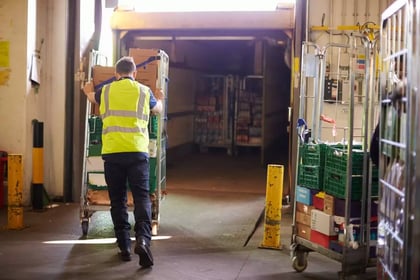 When it comes to retail deliveries, roll containers are loaded into the back of a delivery truck by hand.
When it comes to retail deliveries, roll containers are loaded into the back of a delivery truck by hand.
With fully loaded retail cages weighing up to 1,100 lbs., manually manipulating and positioning these within the truck can lead to strains and the risk of trapping hands.
On arrival at retail stores, a delivery driver then unloads the supermarket cages, again by hand.
Often, city center deliveries make this task even more difficult, with drivers typically having to park 300 feet or more away from where roll containers need to be unloaded. This can often mean drivers have to manually push heavy retail cages over long distances and on inclines.










- Stains from repetitive movement
- Roll cages tipping on slopes
- Injuries from loading and unloading
- Zero manual handling
- No license required
- Total load security
- Works on slopes
Safety Risks of Moving Heavy Roll Cages
What are roll cages used for?
Roll cages are used extensively in retail, logistics and warehouse environments to store and deliver stock
1/3 of accidents in businesses using roll cages are roll cage related
35% of accidents in the logistics or distribution sector involve the handling of roll containers
20% reported accidents in supermarket chains involve the handling of roll containers
How heavy are roll cages?
Loaded retail roll cages can often weigh up to 1,100 lbs.
How are they moved?
Traditionally, individual roll cages are moved manually
Common manual handling injuries involving roll cages:
Maximize safety with a Roll Cage Mover
Get in touch with our team today
980-263-2210
What are the manual handling risks of moving roll cages?
The Health and Safety Executive reports that most retail cage injuries result from:
- Pulling or pushing heavy cages on slopes
- Trying to prevent rolling cages from overbalancing
- Repetitive loading and unloading
- Trapping hands and feet
- Incidents resulting in roll containers falling off tail lifts during loading and unloading.
- Risk of crushing from unbalanced roll containers
How do you move a retail cage safely?
Moving heavy roll containers manually should be avoided where possible. Retailers should implement handling aids like electric Roll Cage Movers for moving heavier cages or where movements are over longer distances or on inclines.
Where the manual movement of cages cannot be avoided, staff should only move one cage at a time, and it’s recommended to push the cage instead of pulling it, as this helps reduce the strain of twisting.
Tips for safer roll container movement
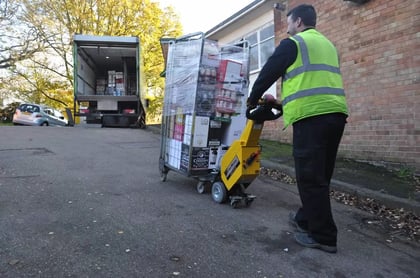 In addition to handling aids, there are several simple actions retailers can take to improve the safety of handling roll containers:
In addition to handling aids, there are several simple actions retailers can take to improve the safety of handling roll containers:
- Quality castors wheels and bearings help reduce the resistance when manually moving
- Routine maintenance of cages is essential
- Ensure roll containers are in full working order
- Replace damaged supermarket cages with new ones
- Correctly load roll containers with heavier items at the bottom
Maximize safety with a Roll Cage Mover
With the Health and Safety Executive reporting that 1/3 of accidents in businesses using rolling cages are cage related – retailers must prioritize cage safety.
Our Roll Cage Movers enable retailers to reduce the risk of injuries and improve workplace safety. With a compact, easy-to-use design, operators can move single or multiple cages with complete control.
Roll Cage Mover FAQs
With a customizable clamp, a Roll Cage Mover can connect to most cage designs. We also provide an array of adaptors to allow you to connect to your cages.
For best control and maneuverability with an electric tugger, we recommend cages are set up with a 2 x fixed, 2 x swivel castor wheel configuration.
No, all of our Roll Cage Movers do not require a license and are easy to use.
Yes! Our Roll Cage Movers can safely work on slopes and are designed to hold roll cages on slopes if an operator needs to stop.
Yes! We offer a unique system that enables you to link multiple cages together and move them using the Roll Cage Mover.
